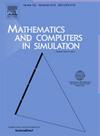形态速率进化的随机模型:近似贝叶斯计算的系统发育回归
IF 4.4
2区 数学
Q1 COMPUTER SCIENCE, INTERDISCIPLINARY APPLICATIONS
引用次数: 0
摘要
在宏观进化研究中,一个主要的焦点是理解性状的进化。已经提出了几个新的统计模型来将一种性状的进化速率与另一种性状的进化速率联系起来。在这个框架中,我们将现有的布朗运动型协变量(BM)扩展到Ornstein-Uhlenbeck (OU)过程型协变量,允许在进化过程中发生稳定选择。此外,为了考虑自适应辐射现象,还建立了早期爆发(EB)过程型协变量类型。由于缺乏模型似然性,我们建议使用近似贝叶斯计算(ABC)技术来估计模型参数。仿真结果表明,该模型的后验估计接近真实参数,效果良好。这些模型被用于分析136种鸟类的数据,以重新研究鸟类喙形进化的速度如何受到脑质量的影响。本文章由计算机程序翻译,如有差异,请以英文原文为准。
Stochastic modeling of morphological rate evolution: Phylogenetic regression with approximate Bayesian computation
In macroevolutionary studies, one major focus is understanding the evolution of traits. Several novel statistical models have been proposed to link the rate of evolution of one trait with another trait. In this framework, we expand the existing Brownian motion-type covariate (BM) to the Ornstein–Uhlenbeck (OU) process-type covariate that allows stabilizing selection to occur during evolution. In addition, the covariate type of the early burst (EB) process type covariate is also developed to consider the adaptive radiation phenomenon. Due to the lack of model likelihood, we propose the use of the approximate Bayesian computation (ABC) technique for the estimation of the model parameters. Simulations show that the models work well with posterior estimates close to the true parameters. The models are applied to analyze the 136 bird species data to reinvestigate how the rates of beak-shaped evolution in birds are influenced by brain mass.
求助全文
通过发布文献求助,成功后即可免费获取论文全文。
去求助
来源期刊

Mathematics and Computers in Simulation
数学-计算机:跨学科应用
CiteScore
8.90
自引率
4.30%
发文量
335
审稿时长
54 days
期刊介绍:
The aim of the journal is to provide an international forum for the dissemination of up-to-date information in the fields of the mathematics and computers, in particular (but not exclusively) as they apply to the dynamics of systems, their simulation and scientific computation in general. Published material ranges from short, concise research papers to more general tutorial articles.
Mathematics and Computers in Simulation, published monthly, is the official organ of IMACS, the International Association for Mathematics and Computers in Simulation (Formerly AICA). This Association, founded in 1955 and legally incorporated in 1956 is a member of FIACC (the Five International Associations Coordinating Committee), together with IFIP, IFAV, IFORS and IMEKO.
Topics covered by the journal include mathematical tools in:
•The foundations of systems modelling
•Numerical analysis and the development of algorithms for simulation
They also include considerations about computer hardware for simulation and about special software and compilers.
The journal also publishes articles concerned with specific applications of modelling and simulation in science and engineering, with relevant applied mathematics, the general philosophy of systems simulation, and their impact on disciplinary and interdisciplinary research.
The journal includes a Book Review section -- and a "News on IMACS" section that contains a Calendar of future Conferences/Events and other information about the Association.
 求助内容:
求助内容: 应助结果提醒方式:
应助结果提醒方式:


